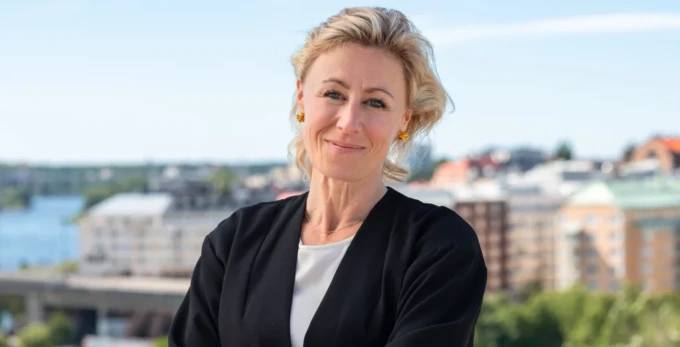Contents
We recently had the pleasure to interview the former CEO of dubizzle, and founder of Working in Digital, Arto Joensuu. Throughout the interview, Arto shares his knowledge, experiences, and advice on how to establish a successful online marketplace, as we explore numerous key areas vital to marketplace success including lead generation, monetization, expansion, trust building and much more.
Q: Hi Arto, thank you for taking the time from your busy schedule to talk with us. Can you begin by sharing some insights about your career so far?
Arto Joensuu: Hi Emil and thanks for getting in touch. Sure. I’ve been working in the digital side or marketing throughout the past 20 years. It all started in the late ’90s with a startup in the mobile services space (we’re talking ringtones, SMS groups, mobile wallpapers, and WAP-based games back then). Iobox was doing some pioneering work in this space and I was happy to be a part of it until it got sold off to Terra Mobile. I then went on to do a “quick” visit at Nokia, which spanned across 12 years and included pretty much the “A-Z” across the digital customer journey. After Nokia, I spent 6 years in Dubai, UAE, where I had the opportunity of being involved in one of the early stage success startup stories: dubizzle.com. After the company was sold off to Naspers, I’ve been involved as an investor and advisor with multiple startups, ranging from job finding solutions for the emerging markets, cryptocurrencies for classifieds and once in a lifetime golf trips across the world. Time flies…

Q: Your first steps into the world of marketplaces were as Head of Marketing at dubizzle in the UAE. How did you strategically align the business and expanded the growth?
Arto Joensuu: Dubizzle was at an interesting stage of development when I joined. It had become a success in Dubai (one of the emirates within the UAE) and was looking to expand further within the country, as well as across the MENA region. The company was led by 2 smart and driven entrepreneurs who wanted to spread the concept across the region and simultaneously increase the revenue streams within the UAE.
In order to prepare ourselves for growth expansion, we needed to ensure we had a common understanding of WHY we exist as a company as well as how we could go about driving this vision forward across markets that we had little personal understanding on. This sparked an internal workstream to define our overall purpose/vision (WHY), our common values (WHO), our operational strategy (HOW) as well as the expected outcomes (WHAT). Some would label this as a brand exercise, I would call it the formation of our manifesto and overall red thread for the years to come. The end result of this exercise is best summarized on Mark’s website. (http://emmarkjames.com/#/)
Q: What were the most important components in your marketing strategy at the time?
Arto Joensuu: On a broad level, we used to talk a lot about 2 types of marketing functions/skillsets: makers and spreaders. Makers were fundamentally responsible for bringing our brand purpose to life through content. Spreaders mastered distribution and optimization. Our content at large was divided into stock and flow content, signifying larger “stock” content pieces centered around wider themes, whilst the “flow” content was more reactive or trigger based.
Another important dimension to the strategy was a holistic understanding of the customer journey and user segments. The customer journey had to be looked at holistically, spanning across overall awareness generation, to engagement, conversion, retention, and monetization. The user segments themselves focused on finding the equilibrium between sellers and buyers as well as b2c vs b2b segments. This, in returned, ensured proper equilibrium between both entities, resulting in a vibrant marketplace where demand and supply met “eye to eye”.
This is where your analytics can play an important role in helping you navigate the waters across both, the acquisition and retention funnels. In addition to our own online metrics tools, I always found it extremely useful to map out our overall communication efforts across all channels. If we were doing PR or other on-ground activations, we could suddenly go back and start seeing patterns between overall awareness generation as well as actual engagement through organic visits and non-paid media.
It’s by no means rocket science, as long as you’ve established clear end action goals that you are monitoring. Is the registration process simple enough? What is our 30-day retention rate? Are the listers able to list their items at ease but with high quality? Do the items get sold? How often are they coming back?
At dubizzle, one of the key metrics we used to look at was what we called “ruffians” (another way of pronouncing RFNS, which meant returning, free, non SEO traffic). This metric was particularly important to us, as it signified a “quality returning visit” and was a good indication for true organic, non-prompted retention. For individual transactions, it was pretty clear that you had to ensure (and reward) for the quality for the listing (to get more views and leads) and simultaneously, ensure that the listing to sales cycle was as rapid as possible. If an item has been listed for several days and isn’t getting leads, we could trigger automated emails to our users, where we prompted an edit/enhancement to the listing (ad a better description/copy text or insert additional images, etc. If the quality score of the listing was good, then perhaps the price was wrong and we educated the seller with average sales prices for similar items he or she was trying to sell.
Q: Do you think your strategy can be replicated today?
Arto Joensuu: I believe that these fundamentals continue to remain relevant in today’s time and age. Organizations that are purpose driven and have their minds set across the entire value chain tend to find their way. I guess the important thing is to stay true to your “why” and not let that get diluted along the way.
When it comes to horizontal marketplaces, I think the same rules still apply in terms of getting the critical mass onto your platform and later monetizing and expanding into b2b verticals. Of course, in today’s time and age, we are seeing the emergence of more and more niche driven marketplaces, where volumes of users are not necessarily large but the engagement and the volume of transactions/retention are extremely high. A big enabler for this has been companies like Sharetribe, that in a similar manner to Automattic (the creators of WordPress) enable marketplaces around niche interests to become mainstream. We can see how social media is constantly evolving from niche players emerging and later getting acquired by larger players and becoming mainstream medias. The same early adopter audiences move on to new niche communities while the masses flock to the services orchestrated by the big internet players. The evolution is constant, and the overall classifieds industry is not immune to this disruption revolution around the corner. Big players need to find new ways to evolve the classifieds marketplace and overall core loop involved.
Q: One of your key responsibilities was to expand dubizzle geographically, can you share how you succeeded with the geographical expansions?
Arto Joensuu: Our regional expansion was a combination of sleepless nights, insane turnaround times, 2 political revolutions, a lot of Red Bull and an end result which sparked a nationwide movement. In other words, welcome to Egypt, basha!
In retrospect, (it’s always easy to be the Monday morning quarterback) there were a lot of elements that made our Egypt expansion a success. Here are a few things I personally felt that made a true difference for us.
1. Decide to win.
We knew that another large classifieds player was also entering the Egyptian market and we had very little time to turn things around. This meant that we needed to put our full weight behind this initiative and our previously crafted brand work really served us well in this context. A highly aligned team can make all the difference in the world when things get tough.
2. Acquire the sellers.
I guess we all know that classifieds marketplaces stride on large volumes of high-quality content. Content attracts buyers and buyers means successful re-distribution if items that people have fallen out of love with. We focused quite strongly on the general items for sale segment, meaning everyday household items that people no longer needed. A great way to do this is to introduce an element of lifestyle-driven marketing into the mix, where the seller represents an aspirational target group that in return attracts buyers into the marketplace. For example, a young family that is selling a baby carriage that their child either outgrew or was originally given as a “double gift” brings people in similar life stages together and can even result in new friendships being formed.
3. Become the talk of the town.
As dubizzle entered the Egyptian market, we wanted to create and engage in an overall society-wide conversation about the second-hand economy. In Egypt alone, the value of unused items people had in their homes was equivalent to the entire GDP of Sweden. If people would take action and sell the items they have fallen out of love with, more money is re-fueled into the economy hence improving the overall economy in the country. This meant an overall paradigm shift in the definitions of ownership as well as the new vs second hand thought process. By tapping into a universal topic that had an impact on the whole society, our dubizzle GM was a frequent visitor to talk shows where larger Egypt wide topics were discussed. Becoming the talk of the town isn’t about creating a clever marketing campaign, it’s really about creating a movement.
Q: How do you think marketplaces need to approach geographical expansions today?
Arto Joensuu: There’s always been active dialogue around the need to localize vs. going to market with a more globally led brand identity. This topic goes beyond brand identity, however. At dubizzle, we soon realized that our mainly desktop driven English site for the UAE would not cut it as we planned to enter mainly Arabic speaking markets. We needed to build our MENA sites from scratch, taking a mobile and Arabic first approach to the whole process. At the time, we realized that for example, Arabic font libraries that were mobile (or even desktop) optimized were scarce and in many instances illegible on mobile devices. Before thinking about a localized marketing campaign, we need to fix the basics and develop a user experience that didn’t get in the way of our core loop. We also noted things like email vs mobile number penetration across emerging markets. It was basically useless to have an email sign up and we went directly to mobile number-based registration methods as these were the common standard across the region. We were fortunate that these changes were made before we entered the Egyptian market with a bang. By having the fundamentals in place, we could shift our focus towards overall activation and awareness building.
Q: In marketing, it’s important to have a consistent tone and imagery. With a marketplace, you heavily rely on user-generated content. How do you ensure that the content submitted by users adheres to, or at least doesn’t break, your tone of voice?
Arto Joensuu: Content quality is a common theme/struggle for any classifieds business. The overall listing process is an obvious area where good content can be encouraged (and incentivized by for example giving the listing higher visibility within the marketplace). The move to mobile/app-based solutions allows for easier image uploading, but also the potential addition of other metadata that can make the discoverability and look & feel of the listing more attractive. I think that also the tone of voice across the overall category structure and content fields can have a big impact on the overall end quality of the listing itself. In recent years, we’ve seen market entrants into the classifieds space (such as Soma), who have taken the individual listing into a more shareable/interactive product card format. What this does, is that the product starts having a life of its own and can be embedded and promoted, liked and shared across multiple venues. This forces the content to be good if it wants to have legs to spread (and live beyond one-off transactions).
Q: How do you make sure that your front page, or first search page, is in line with the brand you want to portray?
Arto Joensuu: This is quite a large topic in itself but obviously, one dimension that differentiates a classifieds marketplace from a more traditional e-commerce marketplace is the overall transaction category structure. For ex. when you enter an e-commerce site, you’re pretty much already certainly looking for a specific item (or category of items in that segment). The overall search process is more structured, and the items displayed usually start from that user-generated search pattern. With classifieds, the process can be similar to an e-commerce play (you go in and search specifically) but there’s also a profound layer of random discovery. For example, you didn’t necessarily know that a 1979 Darth Vader helmet was for sale but you discover it by chance. The home page can serve this endless treasure hunt of discoveries by bringing high-quality content to the home page instead of immediately driving your users down the traditional search path. A lot of the mobile/app driven classifieds spin-offs are leveraging this in quite smart ways and the discoverability along with smart geo and metadata can make the overall user experience a unique one. The brand is the experience and this touches every aspect of the service.
Q: You’ve also helped marketplaces improve their lead generation. Is SEO still important? and do you have any tips on how marketplaces can improve their lead generation?
Arto Joensuu: I think SEO and SMO both continue to play an important role in overall lead generation. If you think of giants like YouTube, a big part of their content gets consumed outside of their own site/app via embedded links on other social channels and websites. This speaks to the fact that lead generation needs to evolve beyond optimizing what’s on your site and thinking about ways in which your user-generated content gets extra mileage through social recognition and distribution.
Q: Do you know of any new creative ways to improve SEO and lead generation?
Arto Joensuu: With reference to Soma’s interactive product card, if an item has a wider lifespan than an individual interaction, it starts accumulating equity throughout its entire lifespan. Here’s where I think the next big thing in classifieds and e-commerce could potentially reside in. Picture this scenario:
When an e-commerce player sells a new mobile phone, they have the transactional data of the one-off sale, after which the item pretty much disappears off the digital grid until the owner decides to sell it on a classifieds site. When the item is posted online, the classifieds player gets a small piece of the item lifetime, as they know when the item was sold and for what price. Then again, it goes off the grid until it’s maybe sold for the 3rd time or disposed for recycling.
What if these items had a digital identity (aka an interactive product card) from the get-go? This would fundamentally bridge the gap between e-commerce and classifieds and could even extend into the whole sustainability piece at the end of life stages of the manufactured device. Along the way, item sale and resale value would be tracked, the item would form “link bait” of its own, as the IIC could be liked, shared or promoted by man and machine alike. Manufacturers would get valuable information on their product resale value, quality, “life expectancy” and distribution. Classified players would basically have multiple touchpoints to the value chain as technically the item is never deleted once sold. This is something I believe has immense potential in the future.
Q: When is it important to optimize monetization? and what are the ‘must have components’ in a successful monetization strategy?
Arto Joensuu: Monetization basically contains two dimensions, the b2b, and b2c sides. I guess that with any of the 2, it really comes down to a healthy equilibrium of buyers vs sellers. Traditionally it was about getting the needed b2c sellers and buyers onto the platform, which in return would bring the b2b players onboard and this would be the first segment that you monetize. Once you’ve become the clear market leader, the b2c monetization kicks in towards the later stage of monetization. The industry has obviously evolved from this and you start seeing rapid verticalization of certain segments (ex. property, cars, jobs) instead of pursuing with a unified horizontal classifieds approach only. You can also start seeing early stage monetization happening with more niche classifieds players where highly specialized b2c groups start forming around specific interest areas like fashion, watches, collectibles, etc.
Perhaps one of the toughest transitions in the abovementioned monetization streams is related to going from b2b monetization to b2c side monetization. There’s always an element of fear that by putting up a paywall to a b2c category, you will lose traffic and users to a competitor. When dubizzle decided to monetize its cars section on the b2c side, the team spent a lot of time evaluating the overall transition and ultimately, the overall used car ecosystem/landscape within the UAE. What we discovered quickly is that b2c users listing their cars on the marketplace received substantially more leads than the other platforms and that the end user was (on average) able to sell their car at a higher price than by going through a 3rd party. We also ran a series of A/B tests to identify the right price point for the listing fee and mapped out the various payment solution providers that would fit our user needs. In the end, the launch was successful and paved the road towards monetizing across other categories as well. In the end, I think it’s really about perceived value for your offering and if the marketplace works, people are ready to pay a small fee to the marketplace enabler.
Q: Trust is key for a successful marketplace, what’s your view on trust and how do you think marketplaces can build a safe platform?
Arto Joensuu: Trust is important. Of course, the definition of trust is probably universal to a degree but the ways in which you address this can vary greatly from country to country. There’s always been a debate about whether buyer profiles should also be registered/verified profiles to avoid fraud. Should the facilitator act as an escrow that holds onto the money until the transaction is completed and validated by both parties. Can we increase trust by having seller reviews and ratings etc. etc. Customer support and overall communication obviously play an important role here and educating the user based on potential pitfalls is very important. Companies such as the one you represent play an important role in preventing fraudulent or bad listings to the marketplace. I don’t personally have a silver bullet answer to the whole equation, to be honest. Maybe you should answer this question instead ?
Q: How can you differentiate yourself as a marketplace in 2019, when there are a ton of new marketplaces popping up?
Arto Joensuu: I think this comes back to the “WHY” your company exists and what’s the deeper substance behind what you are trying to achieve. People don’t buy what you do, they buy why you do it and having this clear vision filter across everything you do creates differentiation. This might also mean that you need to be willing to sacrifice your current cash cows (and create new ones in the long run) by continuously innovating and finding ways to disrupt existing business models. Perhaps a point to make here is that it’s not about disruption “for the sake of disruption” but instead, finding new ways of bringing your “WHY” to life. Think about Kodak. If their true purpose was to enable people to capture their most precious moments in life and re-live them through pictures, they should have been all over the digital camera (which they actually invented). Instead of embracing this new way of bringing their purpose to life, they never capitalized on this new innovation because (at least in the short run) it would cannibalize their film business.

Arto Joensuu
Is a digital change agent with over 20 years of professional experience across startups as well as large multinational corporations. His professional expertise lies within a profound understanding of the digital landscape and its impact on companies both small and large. Whether it’s about leading a large corporation into the digital era, or helping startups cross the tipping point, Joensuu has been there in the trenches and has the battle scars to prove it.
Throughout his career, he has held several leadership positions, ranging from pioneering in digital/mobile marketing at iobox/Terra Mobile during the late 90’s to spearheading the company-wide digital strategy and execution at Nokia. At dubizzle.com, Joensuu spearheaded a transformational re-branding initiative, which had profoundly positive implications across the entire company. This initiative led to a streamlined vision, common set of values and a cultural transformation that could serve as a platform for growth across the organization. He later continued as dubizzle’s CEO, leading the company’s monetization efforts, regional expansion, operational alignment with majority owner Naspers, as well as facilitating the early stage growth of classifieds spin-off Shedd. Today, Arto Joensuu is the founder and CEO of Working in Digital, a network of digital change agents that invest in early stage startups and actively support these organizations as non-executive directors. Current portfolio consists of:
- Soma: a disruptive blockchain based classifieds platform.
- Fuzu: an innovative learning/job platform for the emerging markets.
- Golf GameBook: the driving force behind the digitalization of golf.
- Sports Travel Group: providing unique travel experiences for golfers around the world.




